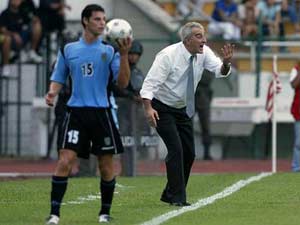A long throw-in can be a powerful weapon in football. With the World Cup underway, Professor Nick Linthorne from Brunei University in the UK explains the physics behind perfect throw-ins.
“A match between the England and Germany national teams. The ball rolls out of play not far from the German goal. Gary Neville takes the throw-in, Michael Owen receives the ball, and it’s 1-0 for England…”
This is just a hypothetical scenario, but it illustrates how a throw-in can significantly impact a match. As a throw-in specialist for the England team, Neville can throw the ball as far as 30 to 40 meters from the sideline to create scoring opportunities for his teammates. But how does a player achieve the farthest throw? In other words, what angle should the throw be at to make the ball travel as far as possible?
Theoretically, the answer is 45 degrees. However, observing throw-in players, you will notice that their throwing angle is usually closer to 30 degrees. The reason for the discrepancy between theory and practice lies in human anatomy.
 |
| A player from the Uruguay team is preparing for a throw-in (Photo credit: Yahoo) |
The distance of the throw largely depends on the throwing speed and angle. According to basic physics, the optimal throwing angle strikes a balance between vertical speed— to increase the time the ball spends in the air— and horizontal speed— to maximize distance. Theoretically, that optimal angle is 45 degrees; however, this is rarely applied in sports.
Professor Linthorne used video footage and biomechanical analysis software to measure the variation in ball speed when changing the throwing angle. He discovered that at lower throwing angles, players throw significantly faster, which is due to muscle structure that allows for stronger horizontal throws compared to vertical ones. Most people also find it more challenging to throw the ball vertically than to throw it straight ahead.
Considering factors such as launch speed, average horizontal throwing force, ball acceleration, gravitational influence, and the height difference between the throw point and landing point… Professor Linthorne derived a formula for calculating the distance of the throw based on the throwing angle, concluding that the optimal angle is 30 degrees, which aligns with player experience.
Professor Linthorne also considered the aerodynamic factors caused by the ball’s spin. However, this has a minimal effect on the overall result. The variation in throwing angle also depends on the player, as they have different arm lengths, muscle strength, and throwing techniques. Nonetheless, the optimal throwing angle for players tends to range from 25 to 35 degrees.


















































